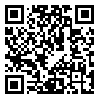Articles accepted at the time of publication
Back to the articles list |
Back to browse issues page
1- University of Sistan and Baluchestan , ahangar@english.usb.ac.ir
2- Department of English Language Teaching, Farhangian University, P.O. box 14665-889, Tehran, Iran
3- University of Sistan and Baluchestan
2- Department of English Language Teaching, Farhangian University, P.O. box 14665-889, Tehran, Iran
3- University of Sistan and Baluchestan
Abstract: (4004 Views)
Nowadays, many people and companies enter the business world. So, rgarding the important and prominent role of internet and commercial advertisements in daily life, the relation between the business world and people should not be ignored. The purpose of this research is to examine the persuasive language in terms of type and number of persuasive steps in a number of Persian commercial internet textual advertisements based on the Cheung’s (2008, 2010) persuasive move schema model. This research is of descriptive-analytical kind. Therefore, To this end, a number of 120 Persian commercial internet textual advertisements collected through official Persian websites have been analyzed as research data based on the type and number of the persuasive steps. As to the type of persuasive steps, the results showed the most used type of persuasive step was steps of the persuasive move "offering suggestions" having been used with a frequency of 63.7%. On the other hand, the persuasive steps of "explicit stimulus actions" included the lowest frequency with a frequency of 0.1%. It was also shown the new persuasive step "motto" has been used with a frequency of 17%. Besides, the examination of the number of persuasive steps indicated the most used advertisements were "four-step" advertisements with a frequency of 26.7%. "Ten-step" advertisements were observed with a frequency of 0.9. Finally, the analysis of the type and number of persuasive steps revealed there was a significant difference not only between the type of steps examined but between their number as well.
Keywords: persuasive language, persuasive steps, textual advertisements, commercial advertisements, internet magazine, Persian language
Article Type: مقالات علمی پژوهشی |
Subject:
Linguistics
Send email to the article author
| Rights and permissions | |
 |
This work is licensed under a Creative Commons Attribution-NonCommercial 4.0 International License. |








